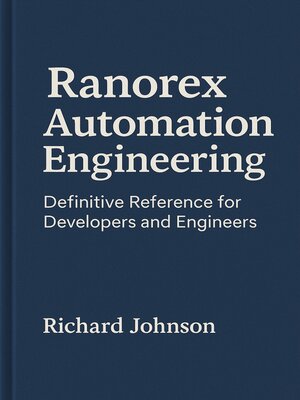Ranorex Automation Engineering
ebook ∣ Definitive Reference for Developers and Engineers
By Richard Johnson

Sign up to save your library
With an OverDrive account, you can save your favorite libraries for at-a-glance information about availability. Find out more about OverDrive accounts.
Find this title in Libby, the library reading app by OverDrive.



Search for a digital library with this title
Title found at these libraries:
| Library Name | Distance |
|---|---|
| Loading... |
"Ranorex Automation Engineering"
"Ranorex Automation Engineering" is an authoritative guide for quality engineers, architects, and automation specialists seeking to master every aspect of test automation with Ranorex Studio. Through an exhaustive exploration of the Ranorex platform's core architecture, automation technologies, and integration within the modern software development lifecycle, this book enables readers to develop a deep and practical understanding of enterprise-grade test engineering. Coverage spans sophisticated approaches to licensing, scalability, deployment models, and platform adaptability, equipping professionals with the insights needed to implement robust and future-proof automation solutions.
At its core, the book delves into advanced object recognition, repository design, and test architecture principles, unraveling both the theoretical concepts and practical best practices needed for sustainable, modular, and maintainable automation frameworks. Readers will discover expert strategies for handling dynamic UI elements, optimizing object recognition, and engineering cross-technology solutions. Through chapters dedicated to scripting, custom module development, API mastery, and third-party integrations, the book fosters a command of automation extensibility—enabling engineers to solve complex challenges and tailor Ranorex to unique organizational needs.
Beyond technical mastery, "Ranorex Automation Engineering" addresses the full ecosystem of automation in today's enterprise: managing infrastructure at scale, orchestrating tests across platforms, embracing DevOps and CI/CD, and ensuring intelligent reporting with analytics. Security, compliance, governance, and risk mitigation are treated with rigor, reflecting the demands of regulated and mission-critical environments. Finally, the book looks toward the future, examining AI-driven automation and self-healing frameworks, and outlining strategies for organizational scaling, technical debt management, and sustainable excellence in automation engineering.







